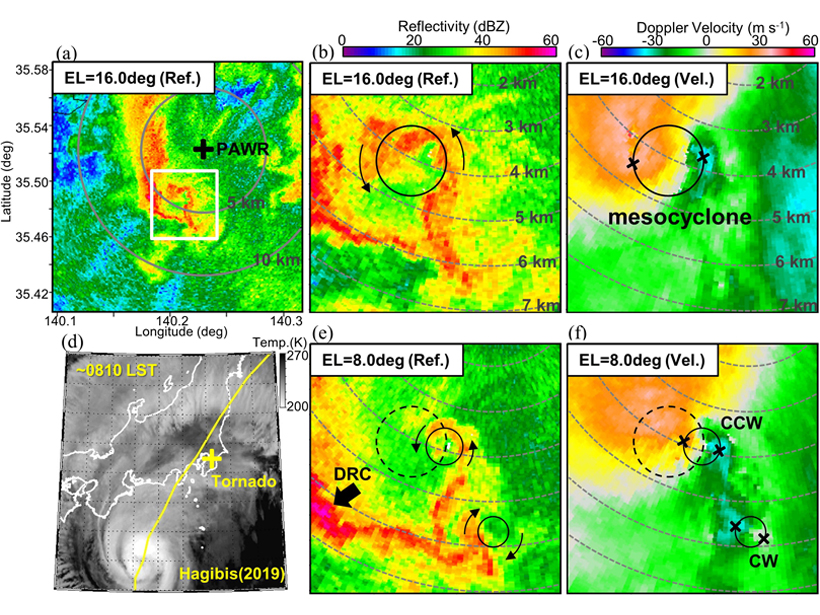Source: Geophysical Research Letters
Tropical cyclones not only bring strong winds and heavy rains but can also generate tornadoes. Even though tropical cyclone‐tornados occur relatively frequently, worldwide documentation is sparse and studies have been limited. Put simply, the processes of tornado formation, or “tornadogenesis”, for tropical cyclone‐tornados is not well understood, especially in comparison to more frequently studied classic supercell tornadoes.
Adachi & Mashiko [2020] used rapid-scan radar at close range to examine the tornadogenesis associated with Typhoon Hagibis in 2019 that struck Chiba Prefecture in Japan. They found that the coupling between a preexisting large-scale vortex and a smaller-scale transient vortex was crucial for the formation of the tornado. The high temporal and spatial resolution in their unique observational data makes it possible to examine the details of the process of tornadogenesis associated with tropical cyclones and provide new insights.
Citation: Adachi, T., Mashiko, W. [2020]. High temporal‐spatial resolution observation of tornadogenesis in a shallow supercell associated with Typhoon Hagibis (2019) using phased array weather radar. Geophysical Research Letters, 47, e2020GL089635. https://doi.org/10.1029/2020GL089635
—Suzana Camargo, Editor, Geophysical Research Letters
Text © 2020. The authors. CC BY-NC-ND 3.0
Except where otherwise noted, images are subject to copyright. Any reuse without express permission from the copyright owner is prohibited.

